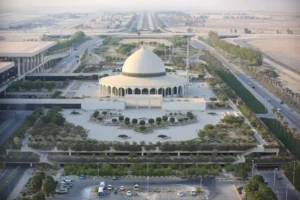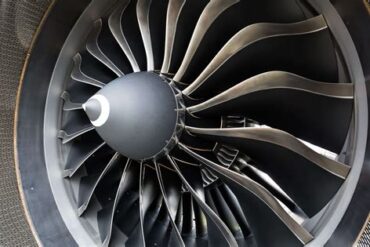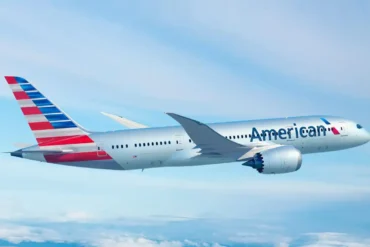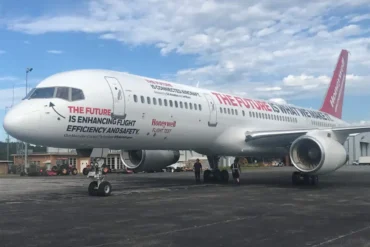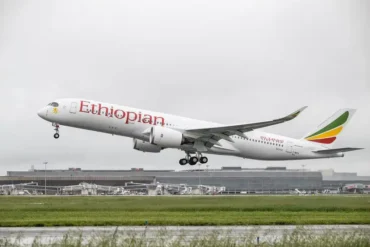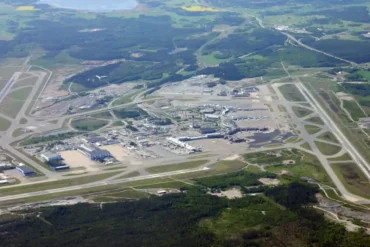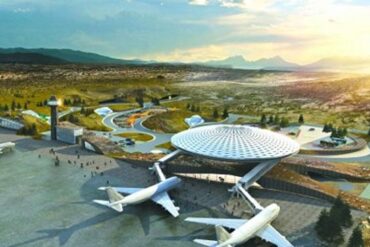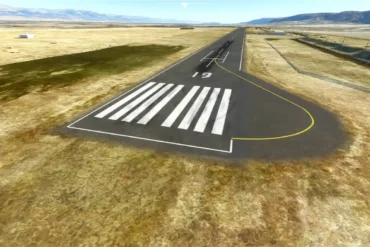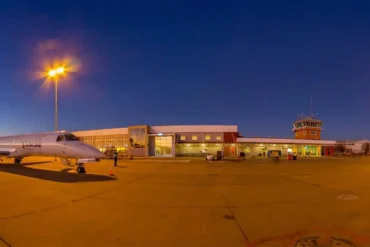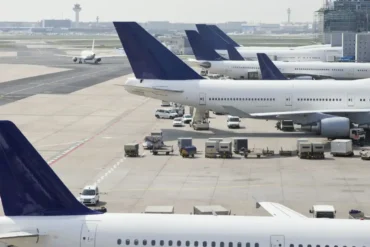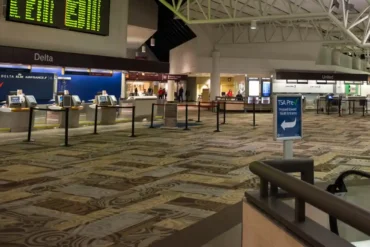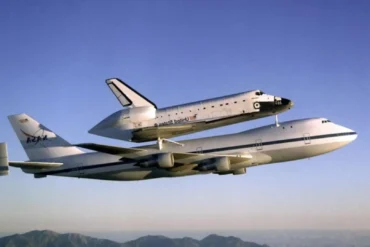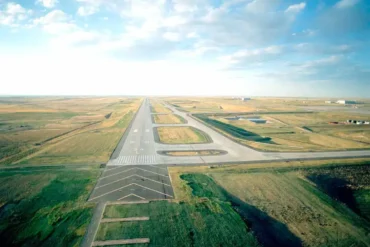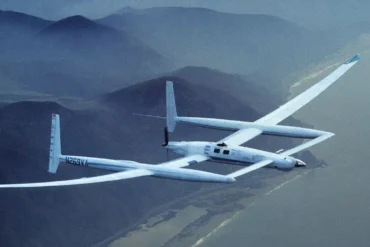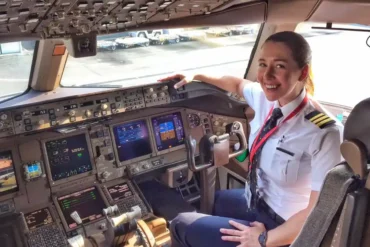You know how it feels when you’re rushing through a massive airport like DFW, trying to make a tight connection? It can be pretty stressful, right? But here’s the thing – these huge airports actually have some cool perks. If you’ve got a longer layover, you might find yourself with plenty of time to explore and enjoy what these mega-hubs have to offer.
Evaluating the largest airports globally
When we talk about the biggest airports in the world, we’re looking at sheer size, not how many people pass through or how many flights they handle. It’s kind of surprising, but the largest airports aren’t always the busiest ones. Let’s take a look at some of these giants.
1. King Fahd International (DMM) – Covering 300 square miles
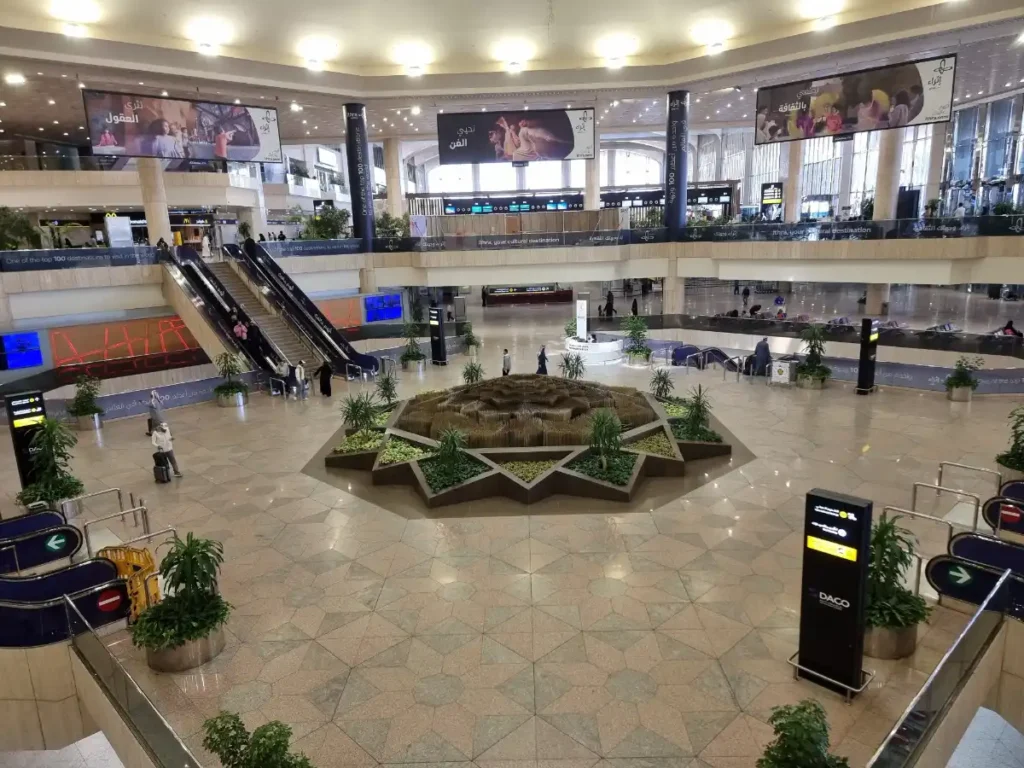
King Fahd International Airport in Saudi Arabia holds the Guinness World Record for the largest airport by land area. This place is massive – we’re talking 300 square miles! That’s bigger than the entire country of Bahrain. It used to be an American military base, which explains its size.
Despite its enormous footprint, DMM only handles about 10 million passengers a year, making it the third busiest in Saudi Arabia. It’s about 20 miles northwest of Dammam, and you’ll see airlines like Saudia, Emirates, and Qatar Airways here. The airport has three terminals – two for regular folks like us, and one just for the royal family and VIPs. Get this – the royal terminal alone is 177,000 square feet! They’ve also got a mosque that can fit 2,000 people, a whole residential area for 3,000 residents, and even their own greenhouse for airport landscaping. Talk about self-sufficient!
2. Denver International Airport (DEN) – Encompassing 53 square miles
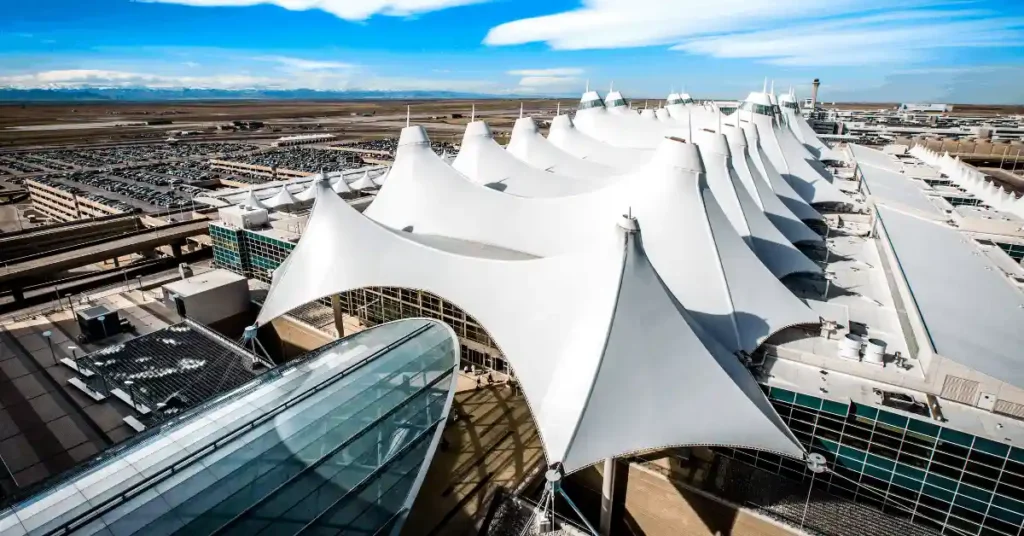
While Atlanta might be the busiest airport in the US, Denver International takes the cake for size. When they built it 25 miles from downtown in the mid-90s, some locals weren’t too happy. But that extra space means room to grow. If you’re visiting Denver and don’t want to rent a car, hop on the light rail to downtown – it’s your best bet. Taxis or rideshares can get pretty pricey.
DEN covers 53 square miles and is famous for its white tent-like roof that looks like the snowy Rocky Mountains. Locals call it DIA, even though its official code is DEN. It’s got three concourses – A, B, and C – connected by a train system. Keep in mind that Denver can get some nasty winter weather, so fog, strong winds, and delays aren’t uncommon.
But don’t worry if you’re stuck there for a while – there’s plenty to do. You can grab a local beer at Boulder Beer Tap House, satisfy your sweet tooth at Rocky Mountain Chocolate Factory, or enjoy a meal at Breckenridge Brewery or Denver Chop House. There’s even a spa in Concourse B if you need to relax before your flight.
3. Kuala Lumpur International Airport (KUL) – 39 square miles
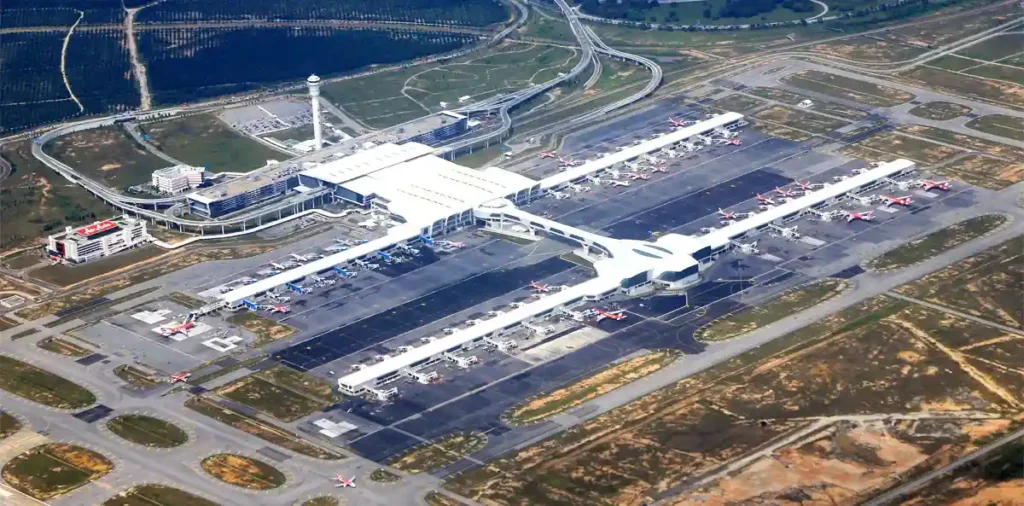
Kuala Lumpur International Airport, or KUL, is Malaysia’s main international hub and one of the world’s largest airports. It’s about 28 miles south of Kuala Lumpur and handles nearly 3,000 flights every week. While it doesn’t have as many daily flights as Dallas-Fort Worth (DFW), it’s actually 1.5 times bigger, covering 39 square miles.
KUL has two main terminals, KLIA1 and KLIA2, which are like two separate airports. They’re seven miles apart, but don’t worry – a quick three-minute train ride on the KLIA Aerotrain connects them. You’ll find Malaysia Airlines and international carriers like Singapore Airlines, Japan Airlines, and British Airways in Terminal One. Terminal 2 is home to budget airlines like AirAsia and AirAsia X.
4. Istanbul Airport (IST) – 30 square miles
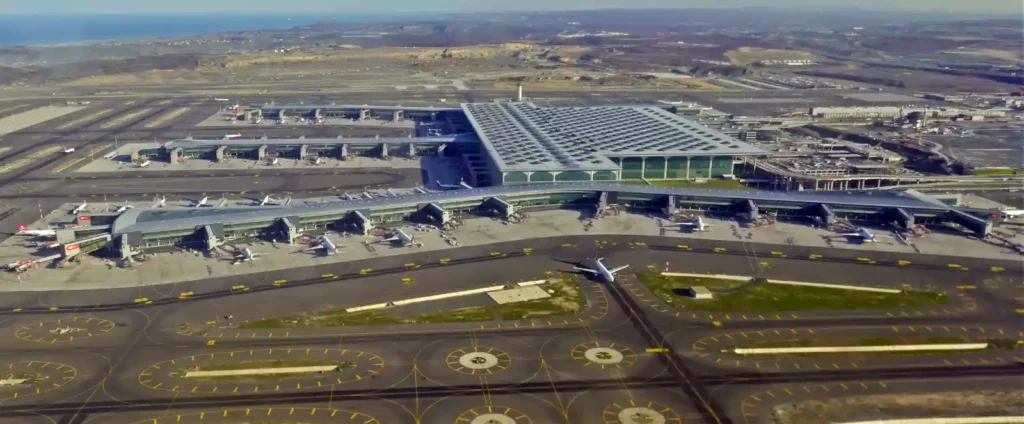
Istanbul Airport is a behemoth, covering 30 square miles – that’s eight times the size of Seattle’s airport! It opened in 2019 and is the world’s fourth-largest airport, handling about 200 million passengers a year with room to grow. It’s got one huge terminal building split into five concourses. A, B, D, and F are for international flights, while G and part of F handle domestic flights.
Hungry? You’ve got options like Burger King for a quick bite, Tadında Anadolu for traditional Turkish food, or Selamlique for local treats. If you love shopping, you’re in luck – there’s a massive 600,000 square foot shopping area that feels like a mall. And if you need a place to crash, check out the YOTEL hotel. It’s got modern rooms, a spa, business areas with fast Wi-Fi, and meeting rooms.
5. Dallas/Fort Worth International Airport (DFW) – 27 square miles
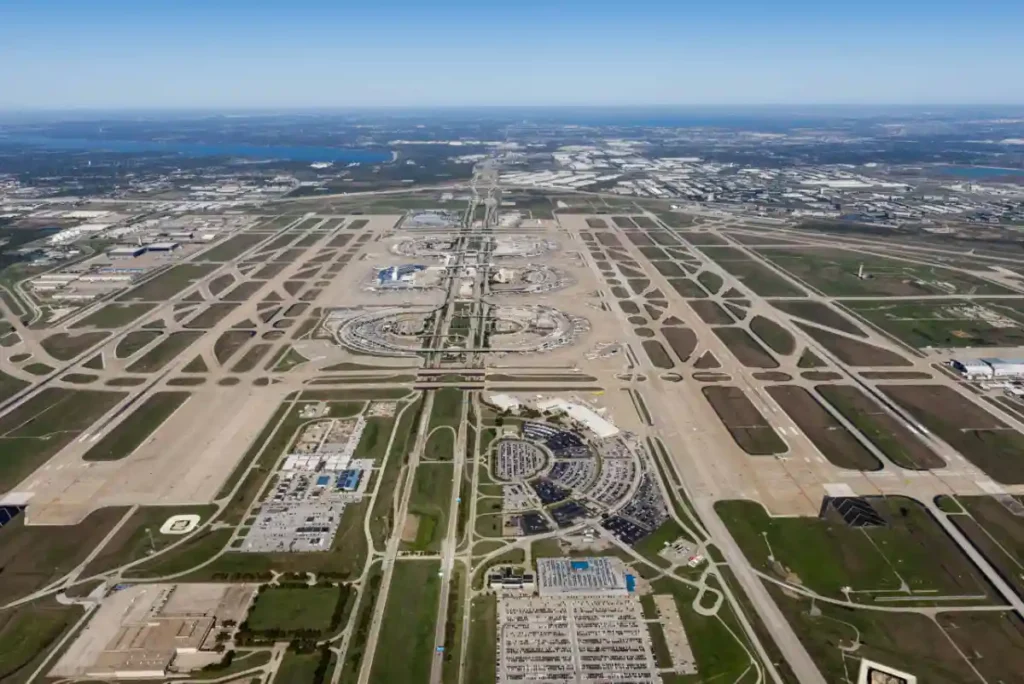
It’s a bit of a bummer that Dallas/Fort Worth International Airport (DFW) isn’t the world’s largest anymore. When it opened in 1974, it was the biggest, but now it’s in fifth place at 27 square miles. It’s so big it has its own zip code and city designation! DFW welcomes millions of passengers each year through its five terminals and 168 gates.
One cool thing about DFW is that it has security checkpoints spread out across each terminal, which usually means shorter wait times. Personally, I prefer this to airports like Denver’s. If you want to know the best time to arrive, check out KAYAK’s airport guide.
While getting through security might be quick, keep in mind that getting between terminals for connections can take some time. Luckily, there’s a free light-rail system called Skylink that connects all five terminals inside the secure area. It runs every two minutes, so you shouldn’t have trouble making your connection.
6. Atlanta Hartsfield-Jackson International Airport (ATL) – 7.34 miles
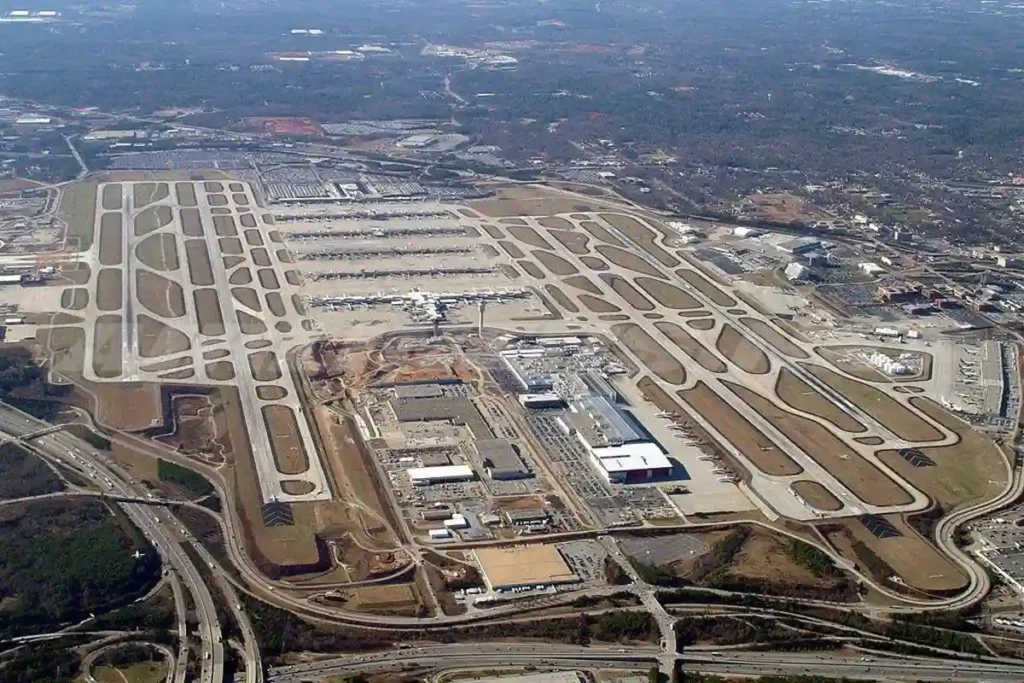
Atlanta Hartsfield-Jackson International Airport (ATL) might not be the largest in terms of area at 7.34 miles, but it’s been the busiest airport in the world for the past 25 years. That’s pretty impressive! It was actually the first airport ever to handle over 100 million arrivals in a single year.
OAG, which provides global travel data, uses total airline capacity to rank airports. They predict Atlanta will offer 62.2 million available seats, beating out Dubai International Airport (DXB) with 57 million seats.
ATL has two terminals, seven concourses, and 192 gates. It’s just 10 miles south of downtown Atlanta, making it super convenient. It’s also a major hub for Delta Airlines – there’s even a joke by comedian Leslie Jordan about how all Delta flights seem to have a layover in Atlanta, no matter where you’re going!
The airport is always buzzing with activity, handling about 2,700 arrivals and departures every day to 150 domestic and 78 international destinations. That’s a lot of people coming and going!
Here’s a tip: Consider getting TSA PreCheck. It costs $78 for five years and can save you a ton of time at security, especially in busy airports like Atlanta. Travelers often debate between Global Entry and TSA PreCheck, but for time-saving at the airport, TSA PreCheck usually wins out.
Largest airports in the world: bigger isn’t always better
You know, when it comes to airports, bigger doesn’t always mean better. The largest airports aren’t necessarily the most efficient or convenient. But you’ve got to admit, there’s something awe-inspiring about these massive aviation hubs. Just think about how far you have to walk sometimes to get from one end to the other!
FAQs about the largest airports in the world
Which airport holds the title of the world’s busiest?
That would be Hartsfield-Jackson Atlanta International Airport in Atlanta, Georgia. It handles over 107 million passengers every year!
What are some of the world’s top airports?
Singapore Changi Airport is often considered one of the best. It’s got a rooftop pool, gaming rooms, and even nap areas. Other great airports include Dubai International Airport, Hong Kong International Airport, and Vancouver Airport. They all offer a wide variety of food options and things to do while you wait for your flight.
